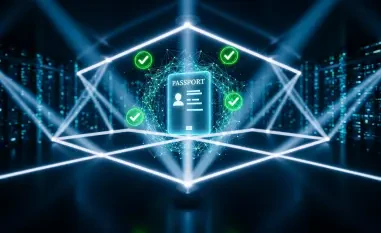In a startling revelation, a highly targeted spear phishing campaign has emerged as a significant threat to organizations supporting Ukraine’s war relief efforts, exposing the vulnerabilities of even the most well-intentioned groups. On a single day, aid organizations such as the International Red Cross, Norwegian Refugee Council, and UNICEF, alongside Ukrainian regional government administrations, fell prey to a sophisticated cyberattack. Dubbed PhantomCaptcha, this operation delivered a malicious remote access Trojan (RAT) via emails impersonating the Ukrainian President’s Office. The attack, executed with precision, utilized weaponized PDFs and deceptive tactics to lure victims into executing malware. This incident underscores the growing audacity of threat actors targeting humanitarian and governmental entities amidst ongoing geopolitical tensions, highlighting the urgent need for robust cybersecurity measures in sectors often considered outside the typical scope of cyber warfare.
1. Unveiling the PhantomCaptcha Campaign
The PhantomCaptcha campaign, identified through detailed analysis by cybersecurity researchers, represents a meticulously planned assault on key organizations aiding Ukraine. Conducted on a single day, the operation specifically targeted individual members of prominent aid groups and regional administrations in areas like Donetsk, Dnipropetrovsk, Poltava, and Mykolaiv. The attackers employed spear phishing emails that appeared to originate from a trusted governmental source, tricking recipients into engaging with malicious content. These emails contained an 8-page PDF document designed to look like an official communique, embedding a link that redirected victims to a counterfeit site. Hosted on infrastructure tied to Russian ownership, this site facilitated the delivery of a WebSocket RAT capable of remote command execution and data theft. The brevity of the attack window—shutting down the malicious domain on the same day—demonstrates a calculated effort to minimize detection while maximizing impact on unsuspecting targets.
Further investigation into the PhantomCaptcha campaign reveals the extensive preparation behind this cyber offensive, spanning several months before the attack was unleashed. Researchers noted that the infrastructure setup began well in advance, indicating a high level of operational planning. The malicious PDFs were uploaded from various global locations, including Ukraine, India, Italy, and Slovakia, suggesting a broad targeting strategy aimed at multiple entities interacting with the campaign. Once victims clicked the embedded link, they were led to a domain mimicking a legitimate video conferencing platform, but in reality, it was a virtual private server based in Finland. This server presented a fake Cloudflare CAPTCHA page, prompting users to verify their identity, a tactic designed to bypass suspicion. Such sophisticated social engineering highlights how attackers exploit human trust, making it imperative for organizations to educate personnel on recognizing these deceptive strategies.
2. Dissecting the Multi-Stage Attack Chain
The attack chain of PhantomCaptcha unfolded in a series of carefully orchestrated stages, each designed to evade detection and ensure persistent access to compromised systems. It began with a heavily obfuscated PowerShell downloader, fetched from a deceptive domain, which served to mask its malicious intent from signature-based security tools. This initial payload retrieved and executed a second-stage script that conducted detailed system reconnaissance, gathering critical data such as computer names, usernames, and hardware identifiers. This information was then encrypted and transmitted to a remote server via HTTP requests, ensuring that attackers could analyze the compromised environment without immediate detection. The multi-layered approach not only complicated analysis by security teams but also demonstrated the technical prowess of the threat actors in crafting an attack that could slip past conventional defenses.
At the culmination of the PhantomCaptcha attack chain, a lightweight PowerShell backdoor was deployed as the final payload, establishing a persistent connection to a remote WebSocket server. This backdoor enabled continuous communication with the attackers’ command-and-control infrastructure, allowing for repeated reconnection attempts to maintain access. Such persistence mechanisms are particularly concerning as they facilitate long-term data exfiltration and the potential deployment of additional malware. The use of social engineering tactics, such as prompting users to manually execute commands through a fake CAPTCHA verification, further amplified the attack’s effectiveness by leveraging human error. This stage of the operation underscores the importance of endpoint security solutions that can detect and block malicious activities beyond just file-based threats, as user-executed code often bypasses traditional safeguards.
3. Connections to Known Threat Actors
Analysis of the PhantomCaptcha campaign has uncovered striking similarities with tactics, techniques, and procedures associated with previously documented cyber threats attributed to specific adversarial groups. Cybersecurity experts have pointed out overlaps with recent activities linked to a threat actor known for targeting Western officials and entities, often with reported connections to state-sponsored operations. The use of compartmentalized infrastructure and deliberate exposure control in PhantomCaptcha mirrors these earlier campaigns, suggesting a shared operational methodology. This connection raises concerns about the potential motivations behind targeting aid organizations and Ukrainian administrations, as such actions could be part of a broader strategy to disrupt support efforts in conflict zones, highlighting the geopolitical dimensions of cyber warfare.
Delving deeper into the operational tactics, the PhantomCaptcha campaign exhibited a remarkable degree of sophistication in its execution and subsequent evasion of detection. The attackers’ decision to limit the attack to a single day, coupled with the rapid takedown of user-facing domains while preserving backend control channels, points to an adversary with extensive experience in offensive cyber operations. The six-month preparation period before the attack further illustrates a patient and calculated approach, allowing for the creation of tailored lures and infrastructure. These characteristics align with patterns observed in other high-profile campaigns, reinforcing the likelihood of involvement by a seasoned threat group. Understanding these connections is crucial for developing targeted defenses against similar future operations that exploit trust and humanitarian contexts.
4. Strengthening Defenses Against Evolving Threats
Looking back at the PhantomCaptcha campaign, it became evident that the incident exposed critical gaps in cybersecurity preparedness among aid organizations and governmental bodies supporting Ukraine. The successful deployment of a multi-stage attack chain through spear phishing tactics served as a stark reminder of the persistent dangers posed by sophisticated adversaries. Reflecting on the event, many organizations realized the necessity of enhancing their security protocols to counter such targeted threats. Post-incident analyses emphasized that the rapid evolution of social engineering techniques had outpaced existing defenses, prompting a reevaluation of how trust is leveraged in digital interactions. The lessons learned from this breach were instrumental in shaping subsequent cybersecurity strategies across vulnerable sectors.
As a forward-looking measure, organizations were encouraged to prioritize comprehensive training programs to educate staff on identifying phishing attempts and deceptive lures like fake CAPTCHA pages. Implementing advanced endpoint security solutions capable of detecting user-executed malicious code proved essential in mitigating risks. Additionally, fostering international collaboration to share threat intelligence helped in tracking and disrupting adversarial infrastructure before attacks could materialize. Regular updates to security policies, alongside investments in real-time monitoring tools, were seen as vital steps to protect sensitive data from exfiltration. By adopting these proactive measures, aid groups and administrations aimed to build resilience against the ever-evolving landscape of cyber threats targeting humanitarian efforts.













